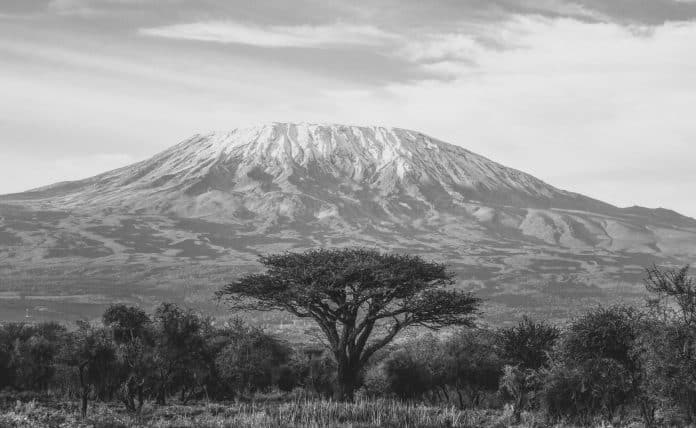Reaching for the Sky: Unveiling Mount Kilimanjaro, Africa’s Tallest Mountain in Tanzania
Mount Kilimanjaro proudly wears the crown of the tallest mountain in Africa in country of Tanzania. Attracting adventurers from all corners of the world, this majestic mountain offers an awe-inspiring challenge and an unforgettable journey. With its snow-capped peak and diverse ecosystems, Kilimanjaro is a symbol of resilience and beauty.
Embarking on the trek to the summit, explorers are treated to a mesmerizing experience, witnessing breathtaking sunrises, rugged terrains, and the mystical allure of the clouds below. The trail is a test of both physical endurance and mental strength, but the reward is indescribable – standing atop Uhuru Peak, the highest point of Kilimanjaro, feeling the exhilaration of conquering one of nature’s greatest wonders.
Beyond the adventure, the local culture surrounding Kilimanjaro is equally captivating. Interacting with the warm and friendly Tanzanian people, visitors gain a deeper appreciation for the rich heritage and traditions that have flourished in the shadow of this magnificent mountain.
Whether you seek a thrilling expedition or a spiritual journey, Mount Kilimanjaro beckons you to reach for the sky and discover the wonders that await at its summit. Let the journey to the rooftop of Africa begin.
Geographical and historical significance of Mount Kilimanjaro
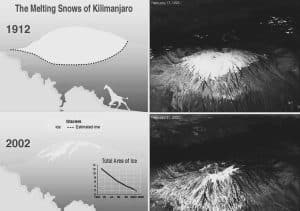
Located in the northern region of Tanzania, Mount Kilimanjaro, the tallest mountain in Africa in country of Tanzania is a dormant volcano that consists of three distinct volcanic cones: Kibo, Mawenzi, and Shira. Kibo is the highest point, with Uhuru Peak standing at an elevation of 5,895 meters (19,341 feet) above sea level. The mountain is part of the Kilimanjaro National Park, which covers an area of 1,688 square kilometers (652 square miles).
Kilimanjaro’s geological history dates back millions of years when volcanic activity formed the mountain’s base. Over time, glaciers and erosion shaped the mountain into its current form. The Maasai people, who have lived in the region for centuries, named the mountain “Kilima Njaro,” which means “shining mountain” in Swahili.
Mount Kilimanjaro has played a significant role in Tanzania’s history, serving as a landmark for navigators and a symbol of national pride. The mountain also has cultural significance, with many indigenous tribes considering it a sacred site and a place of spiritual significance.
Climbing Mount Kilimanjaro: A challenging but rewarding experience
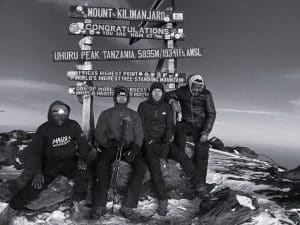
Climbing Mount Kilimanjaro, the tallest mountain in Africa in country of Tanzania, is a bucket-list adventure for many outdoor enthusiasts and thrill-seekers. The trek to the summit is a challenging but rewarding experience that requires physical fitness, mental strength, and endurance. The journey typically takes between five to nine days, depending on the chosen route, and covers a distance of approximately 50 to 70 kilometers (31 to 43 miles).
Several routes lead to the summit of Kilimanjaro, each offering a unique perspective of the mountain and its surroundings. The Marangu route, also known as the “Coca-Cola” route, is the most popular and well-established route. Other routes include the Machame, Lemosho, Rongai, and Northern Circuit routes.
Climbers can choose to climb Kilimanjaro independently or with a guided tour. A guided tour is recommended for inexperienced climbers or those who want to enjoy a more comfortable and safer experience. The guides are experienced in leading expeditions to the summit and are well-versed in the mountain’s climate, terrain, and altitude sickness.
Choosing the right route for your Mount Kilimanjaro climb
Choosing the right route is an essential aspect of planning a successful Kilimanjaro climb. Each route has its own unique characteristics, advantages, and challenges, and is suited for different skill levels and preferences.
The Marangu route is the easiest and most straightforward route to the tallest mountain in Africa in country of Tanzania, with comfortable accommodations provided in huts along the way. The Machame route is more challenging but offers stunning views of the mountain and its surroundings. The Lemosho route is longer but less crowded, providing a more secluded and peaceful experience. The Rongai route is the only route that starts from the north, providing a unique perspective of the mountain. The Northern Circuit route is the longest and most challenging but also the most scenic, with breathtaking views of the mountain and its surroundings.
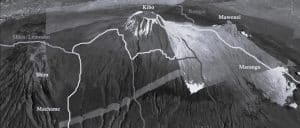
When choosing a route, consider factors such as duration, difficulty, altitude acclimatization, and scenery. It is also essential to consult with a travel specialist or Kilimanjaro guide to determine the best route for your fitness level and experience.
Preparing for a successful Mount Kilimanjaro expedition
Preparing for a Kilimanjaro climb requires careful planning, training, and preparation. Climbers should start preparing at least six months before the expedition, focusing on building endurance, strength, and altitude acclimatization.
Physical training should include cardio exercises such as running, hiking, and cycling, as well as strength training for the legs, back, and core. Altitude acclimatization can be achieved by gradually increasing altitude exposure through hiking or sleeping in high-altitude areas.
Climbers should also ensure they have the necessary gear and equipment for the climb, including warm clothing, sturdy hiking boots, a backpack, and a sleeping bag. Other essential items include sunscreen, sunglasses, a hat, and a first-aid kit.
Essential gear and equipment for climbing Mount Kilimanjaro
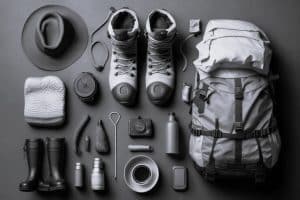
Climbing the tallest mountain in Africa in country of Tanzania requires specialized gear and equipment to ensure comfort, safety, and protection from the mountain’s harsh climate and terrain. The following are essential gear and equipment for a Kilimanjaro climb:
- Warm clothing: Dress in layers, including a base layer, mid-layer, and outer layer. Bring warm socks, gloves, a hat, and a scarf.
- Sturdy hiking boots: Choose boots that provide ankle support and have a good grip on the terrain.
- Backpack: Choose a backpack that is comfortable to carry and has enough space to store your gear and equipment.
- Sleeping bag: Choose a sleeping bag that is warm enough for the mountain’s climate.
- Water bottles: Bring at least two water bottles to stay hydrated throughout the climb.
- Trekking poles: Trekking poles provide support and stability on the mountain’s rugged terrain.
- Headlamp: A headlamp is essential for night hikes and early morning summit attempts.
- First-aid kit: Bring a first-aid kit that includes medication for altitude sickness, pain relievers, and bandages.
Training and fitness tips for climbing Mount Kilimanjaro

Training and fitness are essential aspects of preparing for a Kilimanjaro climb. Climbers should focus on building endurance, strength, and altitude acclimatization.
Endurance training should include cardio exercises such as running, hiking, and cycling. Strength training should focus on the legs, back, and core muscles, which are essential for climbing and carrying gear. Altitude acclimatization can be achieved by gradually increasing altitude exposure through hiking or sleeping in high-altitude areas.
It is also essential to maintain a healthy diet and hydration routine before and during the climb. Climbers should eat a balanced diet that includes carbohydrates, protein, and healthy fats. Hydration is critical, and climbers should drink plenty of water before and during the expedition.
Safety precautions and health considerations on Mount Kilimanjaro
Climbing the tallest mountain in Africa in country of Tanzania presents several safety and health risks, including altitude sickness, extreme weather conditions, and rugged terrain. It is essential to take the necessary precautions to ensure a safe and successful climb.
Altitude sickness is a common health risk on Kilimanjaro, caused by exposure to high altitude and low oxygen levels. Symptoms include headaches, nausea, dizziness, and fatigue. Climbers should take their time ascending the mountain, allowing their bodies to acclimatize to the altitude. Medication such as Diamox can also help prevent altitude sickness.
Extreme weather conditions can also pose a safety risk on Kilimanjaro, with temperatures ranging from freezing to scorching hot. Climbers should bring appropriate clothing and gear to protect themselves from the elements.
Rugged terrain, including steep inclines, rocky paths, and narrow bridges, can also pose a safety risk. Climbers should be careful and attentive when navigating the mountain’s terrain and follow their guide’s instructions.
Cultural and wildlife experiences around Mount Kilimanjaro
Beyond the adventure, Mount Kilimanjaro offers a unique cultural and wildlife experience. Tanzania is known for its diverse wildlife, including elephants, lions, giraffes, and zebras, which can be spotted in the surrounding national parks.
Tanzanian culture is also rich and vibrant, with many indigenous tribes living in the region, including the Maasai, Chagga, and Pare. Visitors can interact with the local people, learn about their customs and traditions, and even participate in cultural activities such as dancing, cooking, and farming.
Conquering Mount Kilimanjaro and embracing the adventure of a lifetime
Conquering Mount Kilimanjaro is a once-in-a-lifetime adventure that offers a unique and unforgettable experience. From the mountain’s breathtaking scenery and challenging terrain to the warm hospitality of the Tanzanian people, Kilimanjaro has something to offer every adventurer.
To embark on this journey, climbers should choose the right route, prepare physically and mentally, and take the necessary safety precautions. With the right mindset and determination, reaching the summit of the tallest mountain in Africa in country of Tanzania is within reach, offering a sense of achievement and exhilaration like no other.
So, whether you seek an adventure, a spiritual journey, or a cultural experience, let Mount Kilimanjaro be your guide, and reach for the sky.
For more articles related to Mountains of Tanzania, click here!

























